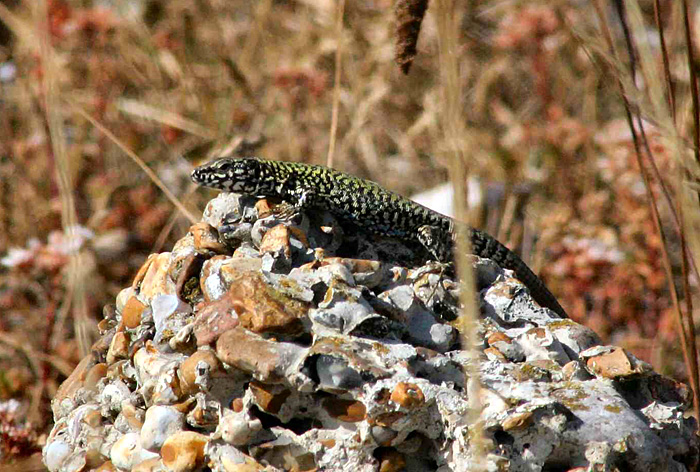Shoreham by Sea
|

|

|
|
Closest Town: |
SHOREHAM BY SE (1.3 km) |
Introduction date: |
1975 |
|
|
Site Name: |
Shoreham by Sea |
Source of introduction: |
Italian stock, from two separate wild coloines |
|
|
Site Access: |
Public |
Colony Status: |
Extant |
|
|
Relative population estimate: |
513 |
Extirpation date: |
N/a |
|
| History: The Shoreham colony is a known introduction of 25 animals in 1975 and a further seven in 1976, in the garden of the late Proffessor Geoff Haslewood who was also Chairman of the BHS conservation committee for many years. The distribution of the animals has moved along the beach via adjacent properties over about the last 30 years, and has now reached the Old Fort. A recent confirmed sighting of Wall lizards from a garden in Lancing and then at West Worthing, could indicate an unproven surge West in the known distribution of this colony. Both newer colonies are adjacent to the railway line that runs to the Shoreham penninsular, so it is possible that the animals are using the railway as a habitat corridor. |
||||
| Ecological impact: No native legged lizards are known to be present, although Slow worms are. It is assessed that this colony has negligable ecological impact in its current state. This could change should the lizards' range exceed the peninsular. |
||||
|
Habitat: Shingle beach, south facing, with rows of houses and bungalows backing directly onto it. Vegetation on the beach is predominantly Sea Kale and Sea Holly varying from dense to sparse clumps. Here and there are small (mostly garden) waste dumps and the occasional areas of concrete (sea defence) remnants. Although the lizards are found over much of the shingle area it is these parts which tend to form the foci on the beach itself. The greatest density, however, takes advantage of the boundaries between beach and gardens. There is also an old fort, which appears to be little used by the lizards. |
||||
|
Morphology: Both green and brown forms can be found.  Morph at Shoreham by Sea
 Morph at Shoreham by Sea
|
||||
|
Location: |
||||